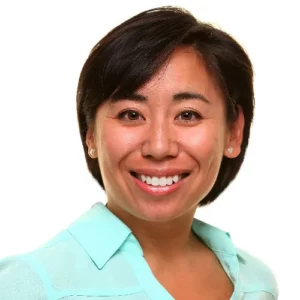
At a recent technology conference in Austin, we stopped in to listen to Clena Abuan, a Senior Technology Associate within BP’s Digital Innovation Organization (DIO). The DIO focuses on identifying emerging digital technology and understanding its application to the business, thus helping to shape the direction of BP’s overall digital strategy.
Clena’s role is to focus on identifying emerging digital technology and understanding its application to the business—helping to shape the direction of bp’s overall digital strategy. Prior to working at bp, Clena served five years in the US Army as a Signal Corps Officer with one deployment to Iraq. She graduated from the United States Military Academy with a Bachelor’s in Foreign Area Studies. She also has a Master’s in IT with a focus on Information Assurance from UMUC and an MBA from the UNC.
We developed her talk into a short Q&A, which follows below.
Question: Tell us about your role at BP?
Answer: We focus, generally, on emerging, disruptive technologies. We are that part of the organization that understands what are the potential disruptors. We try to group the potential disruptors in ways that make it manageable for us to be able to research, speak to different organizations, whether they be startups, university think tanks or research groups. We also connect with our domain experts internally across our business to say, “What is the potential for this technology?” The reason that we do that is ultimately to be able to inform BP’s long-term business strategy.
Q: Tell us about how the division operates?
A: How we operate is influenced to a large degree on what the business is currently focused on. At the same time, we want to leave room for ourselves to explore. We might consider, “What are the use cases and applications that quantum computing could help us with?” Or “what are those new capabilities that could enable BP?” And that requires exercising muscles when we’re working with subject matter experts, who are very focused on their day-to-day. We need to help them create the environment where they can flex those creative muscles, in addition to what they’re doing today.
Q: How do you demonstrate value to the organization?
A: To be able to demonstrate value, we must inform strategy. We explore questions like, “What are the types of resources the organization is looking for?” I’m not just talking about cubic count. There are also things like what quantum hardware approach might be able to be leveraged most beneficially for the particular application that you’re looking at. We do recognize that that is a long-term question that we’re trying to answer.
Q: Can you talk about how your team uses the state-of-the-art classical approach, sometimes as a benchmark for the quantum approach?
We might have explored a quantum approach and in doing so, we also inform the business with something that we can do today by doing a classical benchmark and using it to compare with our quantum benchmark. We can ensure our leaders expect that this is research to understand the technology and start to prepare ourselves to be able to use it, versus saying we’ve reached quantum advantage.
While that would be very exciting, the likelihood is slim, and I say that just to be practical about the approach. We’ve had instances where people read articles and, while it’s a very exciting space to be in, at the same time, we have to make sure that our leaders’ expectations are tempered with the fact that this is still very much a research area.
We need to help, not just participate. Share data. Look for areas where in a pre-competitive way we can engage with others that have similar interests. Ask how we can help stimulate and encourage the quantum ecosystem.
Q: Anything to add?
A: I just want to reiterate the fact that our focus is to inform our strategy. We do collaborate very much with external partners, while at the same time we are looking to build our internal capabilities as well. We’ve also started to look at potential ways of doing partnerships with universities, internship programs. These are just some of the things that we’ve been doing to try to creatively continue to deep dive further into quantum computing and help BP bridge the gap into the areas where we see a lot of potential value.
